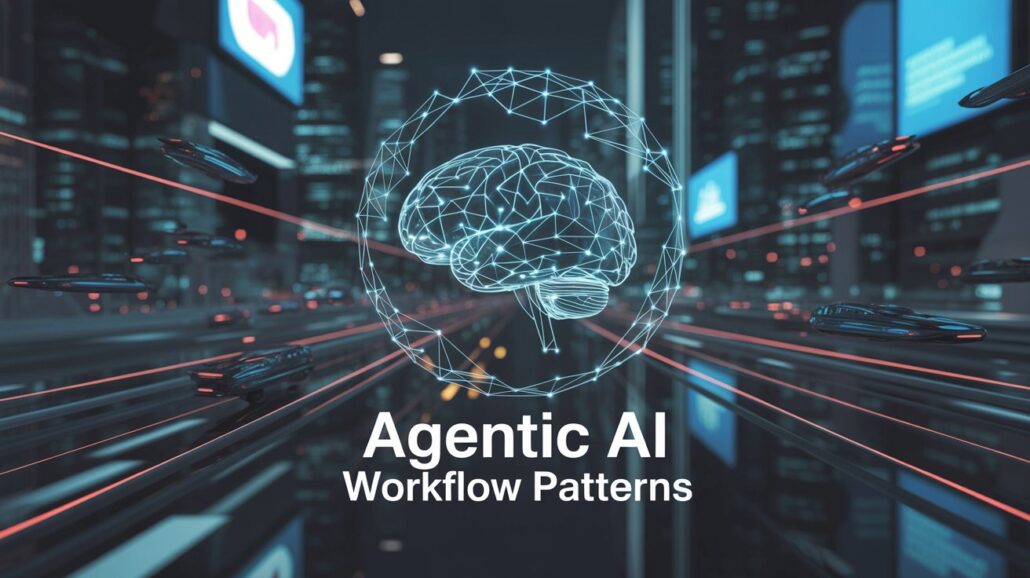
The landscape of artificial intelligence has shifted dramatically. Gone are the days when AI simply responded to prompts or completed isolated tasks. By 2026, we’re witnessing the rise of agentic AI—intelligent systems that can plan, reason, and execute complex workflows with minimal human intervention.
This evolution represents more than just technological advancement. Agentic AI workflows are transforming how businesses approach automation, moving beyond simple rule-based systems to create dynamic, adaptive processes that can handle nuanced decision-making and multi-step operations.
If you’re looking to understand how these AI agents can revolutionize your workflows, you’re in the right place. This guide will walk you through the essential patterns, practical applications, and implementation strategies that are defining agentic AI in 2026.
What Makes AI Workflows “Agentic”?
Agentic AI differs fundamentally from traditional automation tools. While conventional systems follow predetermined paths, agentic AI can assess situations, make decisions, and adapt its approach based on changing conditions.
These AI agents possess three key characteristics that set them apart:
Autonomous Decision-Making: They can evaluate multiple options and choose the best course of action without human guidance for each step.
Goal-Oriented Behavior: Instead of simply executing commands, they work toward specific objectives and can adjust their methods to achieve desired outcomes.
Multi-Step Reasoning: They can break down complex tasks into manageable components and execute them in logical sequences.
This capability means an agentic AI system can handle tasks like customer service inquiries by not just providing scripted responses, but by analyzing the specific situation, accessing relevant information, and crafting personalized solutions.
Core Agentic AI Workflow Patterns
The Sequential Agent Pattern
This foundational pattern involves AI agents working through tasks in a predetermined order, with each step building on the previous one. Think of it as an intelligent assembly line where each agent specializes in a specific function.
A content marketing workflow might use this pattern by having one agent research trending topics, another create outlines, a third write the content, and a fourth optimize for SEO. Each agent passes its output to the next, creating a seamless production pipeline.
The Parallel Processing Pattern
When speed matters, parallel processing allows multiple AI agents to work on different aspects of a task simultaneously. This pattern excels in scenarios where various components can be developed independently and then combined.
Financial institutions use this pattern for loan applications, where one agent verifies employment history while another checks credit scores and a third assesses collateral value. All three processes run concurrently, dramatically reducing processing time.
The Hierarchical Decision Pattern
This pattern establishes a clear chain of command among AI agents, with supervisor agents overseeing and coordinating the work of specialist agents. It’s particularly effective for complex projects requiring oversight and quality control.
In software development, a supervisor agent might coordinate the work of coding agents, testing agents, and documentation agents, ensuring that each component meets project requirements and standards.
The Collaborative Consensus Pattern
Some decisions benefit from multiple perspectives. This pattern brings together different AI agents to analyze a problem from various angles before reaching a collective decision.
Medical diagnosis systems often employ this pattern, with specialist agents focusing on different aspects of patient data—symptoms, lab results, imaging, and medical history—before collaborating to suggest potential diagnoses and treatment options.
Real-World Applications Transforming Industries
Customer Experience Automation
Agentic AI workflows are revolutionizing customer service by creating end-to-end resolution systems. When a customer submits a support request, an initial agent categorizes the issue, routes it to appropriate specialist agents, and monitors the resolution process.
These systems can handle everything from simple account questions to complex technical issues, escalating to human agents only when necessary. The result is faster resolution times and more consistent service quality.
Supply Chain Optimization
Manufacturing companies are deploying agentic AI workflows to manage their entire supply chain ecosystem. These systems monitor inventory levels, predict demand fluctuations, negotiate with suppliers, and coordinate shipping logistics.
One automotive manufacturer reduced supply chain costs by 23% using agentic AI workflows that automatically adjust procurement schedules based on real-time market conditions and production forecasts.
Financial Risk Management
Financial institutions use agentic AI workflows to continuously monitor and assess risk across their portfolios. These systems can detect unusual patterns, evaluate potential threats, and implement protective measures without waiting for human approval.
The workflows monitor market conditions, assess portfolio performance, and can automatically rebalance investments or trigger protective selling when predetermined risk thresholds are exceeded.
Implementation Strategies for Success
Start with Clear Objectives
Before implementing agentic AI workflows, define specific, measurable goals. Rather than aiming to “improve efficiency,” set targets like “reduce processing time by 40%” or “increase accuracy to 95%.”
This clarity helps you design workflows that directly address your most pressing challenges and provides benchmarks for measuring success.
Design for Transparency
Agentic AI workflows should provide clear visibility into their decision-making processes. Implement logging and reporting systems that capture why agents made specific choices and how they arrived at their conclusions.
This transparency builds trust with stakeholders and helps you identify areas for improvement. It’s also crucial for regulatory compliance in highly regulated industries.
Build in Human Oversight
While agentic AI can handle many tasks independently, strategic human oversight remains essential. Design workflows with clear escalation paths and review points for critical decisions.
Consider implementing confidence thresholds where agents automatically request human review when their certainty falls below predetermined levels.
Plan for Continuous Learning
The most effective agentic AI workflows improve over time through continuous learning and optimization. Establish feedback loops that allow agents to learn from their successes and failures.
Regular performance reviews and workflow adjustments ensure your system remains aligned with changing business needs and continues delivering value.
Overcoming Common Implementation Challenges
Integration Complexity
Connecting agentic AI workflows with existing systems can be technically challenging. Start with pilot projects that have limited integration requirements, then gradually expand to more complex scenarios.
API-first architectures and middleware solutions can simplify integration efforts and provide the flexibility needed for future expansion.
Data Quality and Access
Agentic AI workflows require high-quality, accessible data to function effectively. Invest time in data cleaning and standardization before implementing your workflows.
Establish clear data governance policies that ensure agents have access to the information they need while maintaining security and compliance standards.
Change Management
Employees may feel threatened by AI automation or resist adopting new processes. Address these concerns through transparent communication about how agentic AI will augment rather than replace human capabilities.
Provide training and support to help team members adapt to working alongside AI agents and identify opportunities for upskilling.
The Future of Agentic AI Workflows
As we move through 2026, agentic AI workflows will become increasingly sophisticated and accessible. Advances in natural language processing and reasoning capabilities will enable more intuitive agent interactions and broader application possibilities.
Industry-specific workflow templates and no-code implementation platforms are making these technologies available to smaller organizations that previously lacked the resources for custom AI development.
The convergence of agentic AI with other emerging technologies like quantum computing and advanced robotics promises even more powerful automation capabilities in the years ahead.
Ready to Transform Your Workflows?
Agentic AI workflows represent a fundamental shift in how we approach business automation. By understanding and implementing these patterns, organizations can achieve new levels of efficiency, accuracy, and adaptability.
Success requires careful planning, strategic implementation, and ongoing optimization. Start with a clear understanding of your objectives, choose the workflow patterns that best fit your needs, and build systems that can evolve with your business.
The organizations that master agentic AI workflows now will have significant competitive advantages as these technologies become the standard for business automation. The question isn’t whether agentic AI will transform your industry—it’s whether you’ll lead that transformation or follow it.

